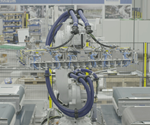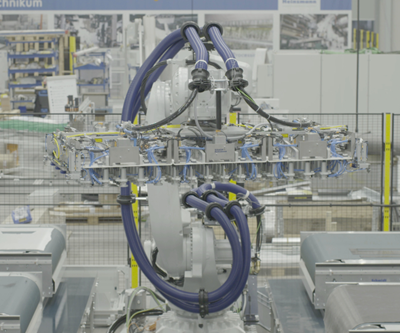A retrospective take on the composites industry and the pandemic
Dale Brosius reflects on recent composites industry trends and how they are impacted by the coronavirus pandemic.

Source | Getty Images
As of the end of May, it is approaching three months without a face-to-face meeting with a co-worker or other industry colleague, and likely to be another month before that happens. But rather than bemoan fate, the days have become longer and warmer — always a positive trend — and there appears to be some increasing potential for those personal interactions to resume in the months ahead. On the plus side, working from home has resulted in a lot of home improvements being completed well ahead of schedule, including painting, home hardware upgrades and general decluttering. And my lawn has never looked better!
It has been a mixed bag for my sports hobbies. I bought a new carbon fiber tennis racquet just before my club closed, and it’s only now, at the end of May, that tennis has resumed, and I can get it strung. My ski season was cut short in March; I had planned to demo skis during my last trip to the Rocky Mountains in April, as I am due for a new pair. That will now wait until next season. On the other hand, I am playing more golf (with social distancing) than I have in decades, highlighting the need to replace my driver that I have used for almost 30 years (it does have a carbon fiber shaft, though).
One thing about spending such an inordinate amount of time not “out and about” is that it offers some time for retrospection. I started writing this column for CompositesWorld in 2013. I did a look back after two years in June 2015, and a true five-year recap in May 2018. So here, after seven years, I will look at some more recent columns and see, in light of the current pandemic, how well they’ve held up.
In March 2019, I wrote about the North American International Auto Show (NAIAS) in Detroit, held the previous January, noting the lack of excitement and absence of key OEMs, following only a week behind the Consumer Electronics Show (CES) where many of these same OEMs had a big presence. In a big shakeup of a 30-year tradition, the 2020 NAIAS was rescheduled for June 2020, with a new format to include outdoor demonstrations. I was really looking forward to this, until the coronavirus pandemic squelched the event; now it’s rescheduled for June 2021. While it’s unclear what new models and features we might have seen at this year’s show, it’s almost a sure bet we will see a slew of battery electric vehicles and hybrids in 2021. General Motors, for one, announced a major initiative in March to become the leading North American supplier of electric vehicles in the next several years, and have maintained their investment in this initiative through the pandemic. I expect other OEM’s to follow suit. While this may not mean a lot for composites in the short-term, I do believe it will long-term.
The path back to “normal” will be filled with opportunities.
In April 2019, I wrote about the impending end of manufacture of the double-decker Airbus A380, and the breakthrough composites technologies advanced by this aircraft, including thermoplastics, resin transfer molding, automated fiber placement and pultrusion. This paved the way for next-generation aircraft like the Boeing 787 and the Airbus A380 and all other aircraft to come. The pandemic has accelerated the retirement of the A380 by several carriers, including Air France and Lufthansa, and speculation that Qatar Airways and Etihad Airways may soon follow. In late May, the press reported that Emirates Airlines, the leading user of the A380, may retire a large portion of the fleet early. This was later refuted. I have yet to fly on one of these aircraft, which many have described to me as a great experience. Unfortunately, it may become a bucket list item never fulfilled.
Finally, in July 2019, I sang the praises of the young professionals and students I saw responding to initiatives by our professional societies to put them front and center at conferences and other events, showing them the value of making in-person connections. While this cohort is no doubt more adept at navigating the current virtual environment than us “old-timers,” I worry that the pandemic has impacted the progress this new generation of industry leaders was making. It’s imperative that all of us make sure we reinvigorate that progress as soon as we are able.
Clearly, the pandemic has impacted most facets of the composites industry, from product demand and workforce development, to accelerating or decelerating trends underway before it arrived. The path back to “normal” will be filled with opportunities. If we take advantage of those opportunities, we can create an ever stronger composites economy.
Related Content
Women in the Composites Industry brings together women for networking, educational opportunities
Aiming to support the growth of women in this industry, the WCI industry group and its partners recently held its first live training event hosted by Owens Corning.
Read MoreFACC Academy begins training, onboarding operations
FACC’s newly launched training platform will address skilled aerospace worker shortages head on, offering more than 250 specialized training courses for its entire workforce.
Read MoreComposites UK launches best practice guide for composites tooling
“Mould Tooling for Fibre-Reinforced Polymer Composites” is latest in Composites UK’s series of good practice guides, available online for free.
Read MoreToray, University of Chicago speed up polymer recycling R&D
A jointly developed multi-scale computational predictive technique can accurately predict viscoelasticity from the chemical structures of polymers, ramping up product maturation.
Read MoreRead Next
The coming decade: Clarity with a strong dose of uncertainty
Columnist Dale Brosius considers the potential and uncertain role of composites in aerospace, automotive and other markets in the coming decade.
Read MoreComposites suppliers, fabricators respond to coronavirus
Companies across the composites industry supply chain share how the COVID-19 pandemic is affecting their businesses, and how they are available to help.
Read MorePlant tour: Daher Shap’in TechCenter and composites production plant, Saint-Aignan-de-Grandlieu, France
Co-located R&D and production advance OOA thermosets, thermoplastics, welding, recycling and digital technologies for faster processing and certification of lighter, more sustainable composites.
Read More










.jpg;maxWidth=300;quality=90)










